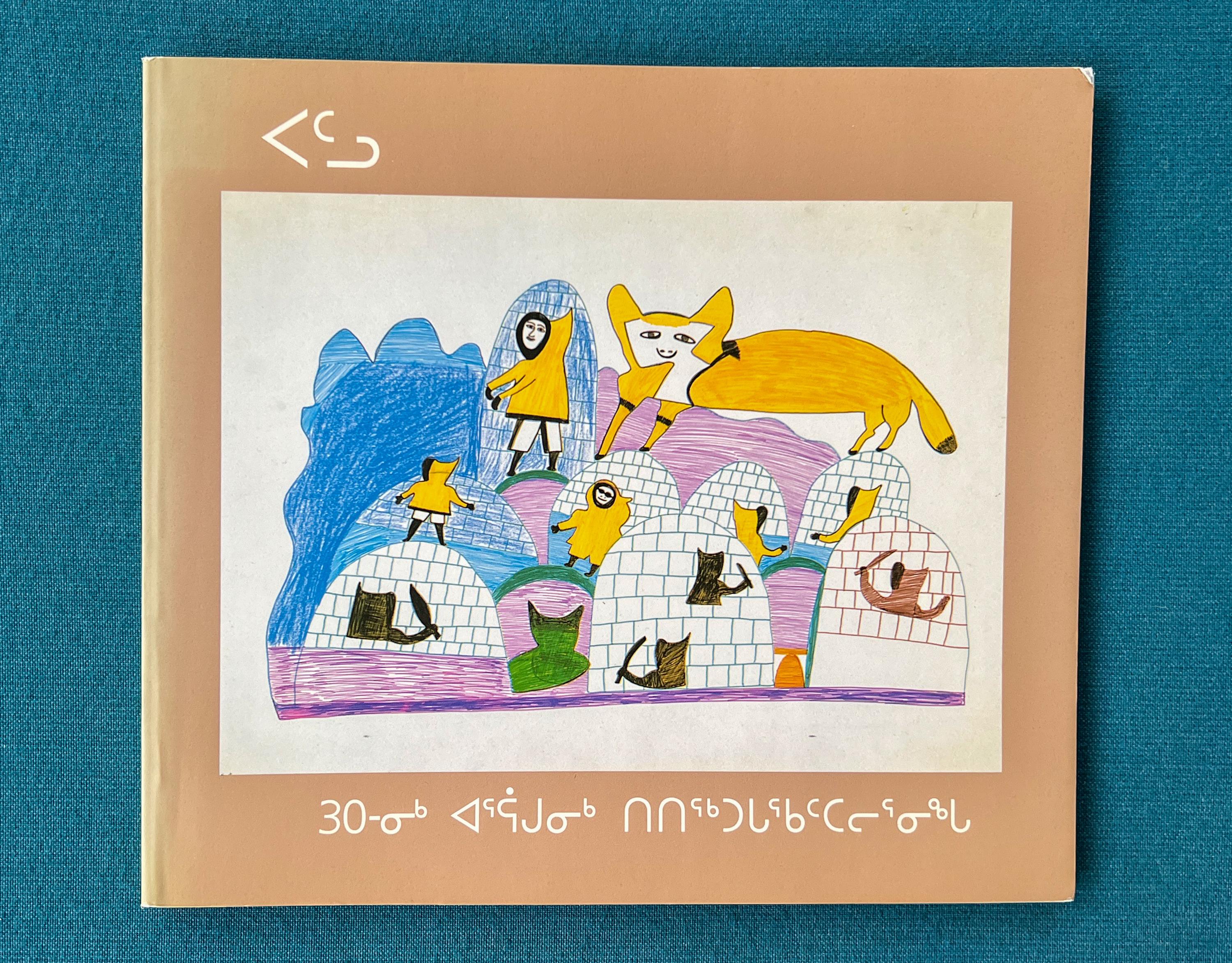







This educational book is a very important part of Canadian graphic design history.
The “Teaching Algonkian Language as a Second Language” teaching book series was created in the late 1970's by the Education and Cultural Support Branch of Indian and Northern Affairs Canada as a sort of early reconciliation effort by the federal Canadian government to restore the many indigenous languages they had destroyed through cultural genocide (i.e. residential schools and other types of forced European assimilation practices. )
The purpose of the original textbooks (there are now spinoffs) was to teach Algonquian languages (specifically Cree) to indigenous teachers, teacher-aides, and language instructors. Once trained, they could then go back to their classrooms and teach children in their own language instead of the language of their colonizers. But by the late 1970s, many Algonquian languages and the Canadian syllabics used for reading and writing had been systematically destroyed and replaced with English.
Because of this, many indigenous people could only read and write in English. So in order to teach their languages back to them, the government needed both English and syllabic typefaces. There were many many English typefaces to choose from, but there were no Cree typefaces (syllabics)—They needed to design one.
For this they hired Japanese Canadian designer Eiko Emori. She had already completely modernized children's book design back in her home of Japan 20 years prior, and was a master of type. Although formally trained using latin type forms by teachers like Colin Forbes (Pentagram), Ken Garland, Paul Rand, Alvin Eisenman, Norman Ives, Herbert Matter, Bradbury Thompson, she also knew how to set type set in multiple other scripts and languages including Japanese, English, French, Hebrew.
From a technical standpoint, she could have used a few basic references and managed to create a syllabic typeface based on that alone. But Eiko understood the need for fully understanding the living and breathing cultural contexts that the syllabics reading and writing system was based on before going ahead with a design. So with the help of the grant of the Canada Council, Eiko travelled across Canada to meet with indigenous communities and linguists. She also immersed herself in their culture by attending pow-wows and other events. She then would take all of her research and hand draw the syllabics at her studio in various sizes (this was pre-computer, pre-desktop publishing). The various sizes ensured crisp legibility at various sizes using phototypesetting, and later Letraset, which is what was used in the educational books for the Cree.
UNFORTUNATELY (for now), I was only able to acquire the kindergarten teaching book which DOES NOT have the syllabics. (I am still looking for the ‘Grade 2’ and Grade 3' books which may show the syllabics.) Apologies too for the quality (water damage), this is how I received it.
 ;
;